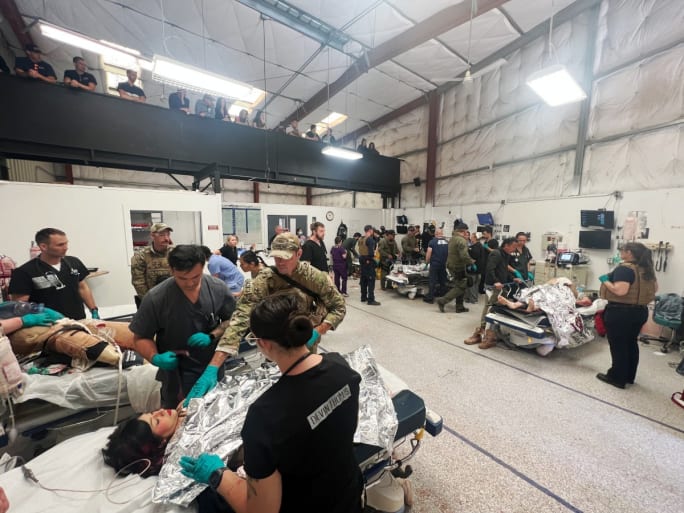
Dr. Joe Nakagawa, medical director for the Hathorne Police Department, leads a medical training session for officers.
PHOTO: Hawthorne Police Department
Years ago when Dr. Joe Nakagawa was among area physicians invited to get involved with the local SWAT team he made the commitment and stuck to it. That led him along a path to becoming a reserve officer and finally stepping away from his emergency room role to become a fulltime police officer. Now he leads the tactical medicine program at the Hawthorne (CA) Police Department.
Nakagawa, 48, graduated from medical school at University of California, Los Angeles, where he completed his residency and training in emergency medicine. He first started working in an emergency room 17 or 18 years ago. About 15 years ago Nakagawa signed up to assist the SWAT team, but soon learned other doctors were not as free to participate when needed.














